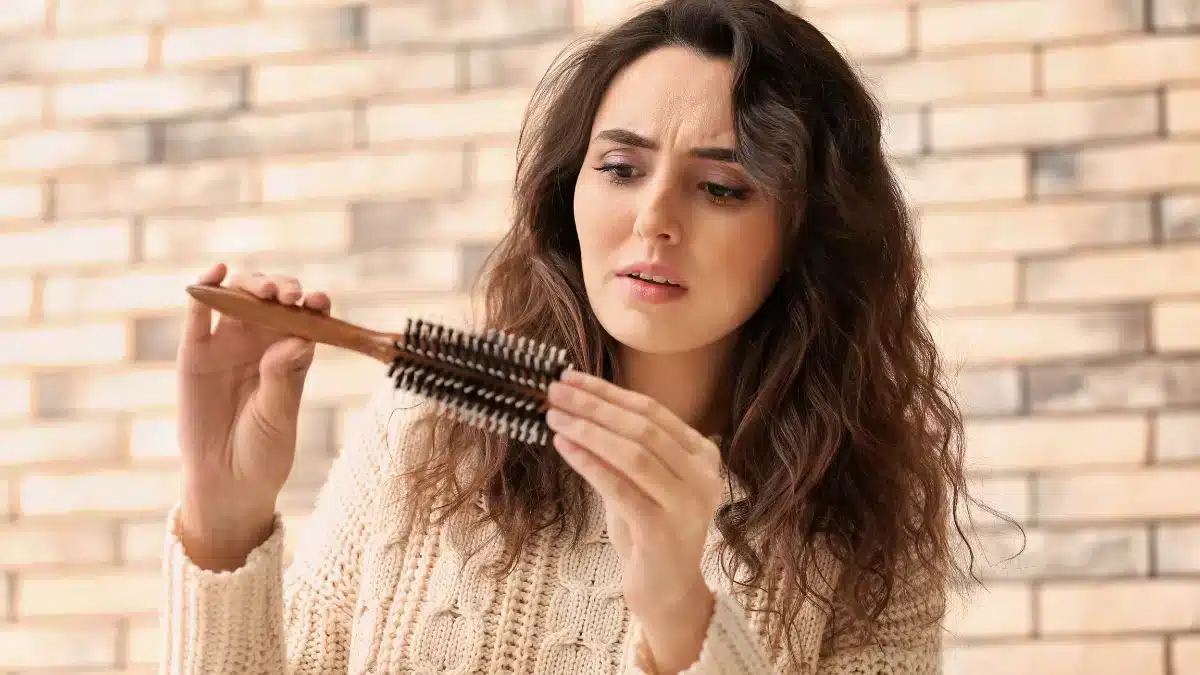Unlocking the Mystery: How to Tell if you have thin hair
Thin hair is a common concern many people share, but how can you be sure if your hair falls into this category?
Thin hair refers to hair strands with a smaller diameter or reduced density than thicker hair.
A lack of volume, fullness, or thickness characterizes thin hair.
By better understanding the unique qualities of thin hair, you can customize your hair care routine to boost volume and keep your hair healthy.
This article will help you understand the signs and characteristics of thin hair.
Density
The general thickness of individual hair strands characterizes thin hair.
If your hair strands are naturally fine and lack fullness, it is an indication of thin hair.
The diameter of each strand typically determines this.
“Thin hair refers to the density—i.e. the number of strands—of the hair in a given area on your scalp,” Dr. Saedi says. “So, it is the amount of hair on your scalp.”
Dr. Nazanin Saedi, certified dermatologist and Clinical Associate Professor at Thomas Jefferson University
Scalp Visibility

You may notice a sparse appearance or need help to achieve voluminous hairstyles if you have thin hair.
Despite having an average amount of hair on your scalp, it may be challenging to create the illusion of thickness.
It’s important to note that thin hair does not necessarily indicate significant hair loss.
Fragile strands
The fragility of the hair strands is a common characteristic of thin hair, making them more susceptible to breakage.
If you observe that your hair breaks easily or you notice a higher frequency of split ends, these could be signs of thinning hair.
Difficulty styling
Styling thin hair can present challenges due to its delicate nature and increased susceptibility to breakage.
The decreased density and fragility of thin hair make it more challenging to achieve desired hairstyles.
How to take care of thin hair?
Thin hair is identifiable by a lack of density, resulting in a sparse or flat appearance.
Special attention is needed to boost volume and ensure the well-being of thin hair.
Some tips for taking care of thin hair:
Consume a balanced diet
A well-balanced diet is crucial for healthy hair.
To nourish your hair, include lean meats, fish, vegetables, fruits, and foods rich in vitamins, minerals, and proteins.
Use the right products
Choose lightweight, volumizing hair products made specifically for thin or fine hair to add body and moisture without weighing it down.
Avoid overwashing
Frequent washing can strip away natural oils and lead to dryness.
Wash every other day or as needed to maintain a balanced scalp and hair.
Be gentle
To prevent breakage, it is advisable to gently pat or squeeze out excess moisture when towel-drying your hair.
Limit the use of heat styling tools

Use low to medium heat settings, applying a heat protectant spray before styling to prevent damage.
Takeaway
A lack of density, fragile strands, and difficulty styling characterizes thin hair.
To care for thin hair, consume a balanced diet, use lightweight volumizing products, avoid excessive washing, be gentle when towel-drying, and limit heat styling.
Thinning hair can indicate an underlying disorder.
If you are experiencing hair thinning, consult an expert to early diagnosis and treatment.
Frequently Asked Questions
How do I know if I have fine or thin hair?
Determining if you have fine or thin hair can be done by observing the diameter of individual strands. Fine hair has a small circumference, while thin hair refers to a lower density of strands. Sparse appearance, difficulty achieving volume, and hair fragility are common indicators of thin hair.
How do you know if your hair is naturally thin?
If your hair is naturally thin, it tends to have a sparse appearance and lacks volume. The individual strands have a smaller diameter, resulting in less density. It may be difficult to achieve fullness and hold styles.
How can you tell the difference between thin hair and baldness?
Thin hair refers to a lower density or smaller diameter of individual strands. In contrast, baldness refers to significant hair loss or a lack of hair growth. Baldness involves more pronounced and extensive hair loss, often resulting in a visibly bald scalp.
Is thin hair attractive?
Beauty is subjective, and attractiveness varies based on personal preferences and societal standards. Thin hair can be considered attractive depending on style, confidence, and how well it complements one’s features. It is essential to embrace and appreciate your natural hair type.
WowRx uses only high-quality sources while writing our articles. Please read our content information policy to know more about how we keep our content reliable and trustworthy.






